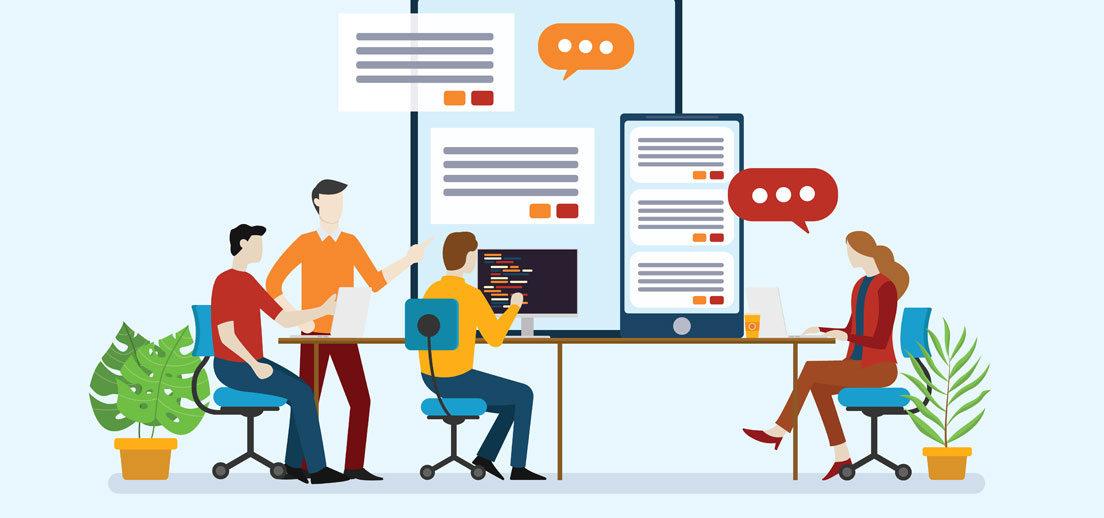The world of business is changing rapidly. Technology has evolved from a luxury to a necessity, and the digital age is upon us. Businesses need to adopt new approaches to application modernization in order to stay competitive and attract talent. However, this process can be difficult because traditional IT departments are still accustomed to waterfall development methods that require significant upfront investment before any benefits can be realized. Modernizing your applications can be a daunting task, but it's also one of the best ways to keep pace with changing business requirements.
What Is Application Modernization?
Application modernization is a process of transforming legacy applications into modern ones. Modernization improves business processes and improves the quality of user experiences by using modern technologies such as HTML5, CSS3 and JavaScript.
It's a great way to solve common problems related to legacy applications: they're hard to maintain, slow down your organization's workflows and can't be adapted quickly enough when new requirements arise.
Why should you modernize your applications?
Modernizing your applications is a great way to improve both security and performance. It also helps you stay compliant with regulations, reduce costs and deliver an improved user experience.
Modernizing your application can be challenging but it doesn't have to be overwhelming or time-consuming. With the right approach, you'll be able to modernize your applications faster than ever before!
Today's businesses need to employ an application modernization strategy to stay competitive.
You’ve probably heard the term “digital transformation” thrown around in the media, but what does it really mean? It's a process that includes using technology to transform a business.
The benefits of application modernization include:
- Improving productivity through automation and integration with other systems
- Extending reach with mobile apps and cloud-based services (like Microsoft Azure)
- Increasing security by moving data off premise
The right approach depends on your industry, size, and budget but there are several things you can do now to get started. In this post, we'll explore how modernizing apps can help organizations improve their performance and maintain competitive advantage.
3rd platform-driven strategy
The third platform is a combination of the other two. It takes advantage of the opportunities that come from combining traditional and modern approaches to application modernization, but also adds in some new features that make it more powerful than either approach alone.
For example, you might use a 3rd platform to provide:
- Multi-tenancy—a way for multiple organizations (or even individuals) to access your solution using their own unique username and password. This allows them to share resources without having any impact on your internal network or data center infrastructure.
- Service-level agreements (SLAs)—a guarantee that each user will receive certain levels of service at specific times during their use of your product(s). These SLAs are important because they help ensure quality control over ongoing operations while reducing risk by ensuring consistency across different users' experiences with the same system in real time.
Business-driven approach
If you're looking to improve on your approach to application modernization, a business-driven approach will help. You can use this strategy if your company is already in the midst of an IT transformation and wants to stay focused on achieving business goals through modernizing applications. In this case, it's important that the IT organization works closely with business stakeholders so they understand how their needs impact the overall project. If there are any problems along the way (such as missed deadlines), these teams will be able to work together quickly in order to resolve them before they escalate into larger issues like wasted time or money spent unnecessarily.
Agile Development
Agile development is a software development method that focuses on the customer and the end-user. It uses iterative and incremental development, which means that it's based on the idea that the most important thing is to deliver working software on a regular basis. The goal of agile methodologies is to identify problems quickly using small teams who work together in short cycles of time (usually one week).
Agile development provides an ideal platform to modernize applications by:
- Leveraging 20th century infrastructure standards such as J2EE or MVC frameworks instead of adopting a new language like Kotlin or NodeJS (which are much more complex than Java). This approach allows teams using these languages to maintain their existing skill sets while also reducing costs by skipping expensive training sessions required for switching over from one language to another entirely new one like Kotlin itself does not require any changes other than having developers switch their preferred coding style from Java back into Kotlin again once they've finished working on all aspects needed within those projects so long as there weren't any major issues encountered earlier when attempting this transition."
It's important to note that this isn't just about having small teams; it also involves other aspects such as frequent communication between stakeholders, use of common tools such as Jira/Trello etc., prioritization of tasks based on value added vs risk factor etc.
Thinking beyond productivity and cost reduction
When you're thinking about application modernization, it's important to remember that the goal isn't just productivity and cost reduction. Instead, you need to focus on business outcomes like improving customer satisfaction and increasing revenue.
How do you measure these business outcomes? You can use a variety of tools such as surveys, interviews with customers and more. This can help you identify which processes are driving the most value for your organization at any given time—and ultimately give them a plan for improvement!
But what if there are multiple teams involved in an application modernization project? How do they work together effectively when they’re spread across multiple geographic locations or departments within an organization (or even countries)? This is where AI comes into play: by automating tasks that used be manually performed by humans during their daily duties such as data entry/manipulation/reporting etc., AI becomes essential because it allows us all spend more time doing what matters most - innovating our products without worrying about tedious details like data management issues caused by manual labor."
Real-time business control through automation and AI
Automation and AI are two terms used to describe the same concept. They both refer to the use of software to perform tasks that would otherwise be performed by humans, such as data entry, product design and production.
Automation has been around for many years; however, it was only recently that artificial intelligence (AI) began to take hold in business applications. As more organizations apply automation and AI in their applications across industries like retail, health care and manufacturing – there’s no doubt these technologies will continue to grow as more people begin using them at work every day.
Automation also helps you manage the complexity of your apps. It provides an efficient way to test and improve your applications, reducing the time it takes for you to release new features and updates.
Automated testing can also reduce costs by automating repetitive tasks that are done manually by developers. This allows them more time for developing other features or fixing bugs in existing ones—and even potentially saving money overall!
Conclusion
There are many ways to approach application modernization: package per package, app per app, rewrite everything. There is no one-size-fits-all here. The most popular approach is to talk with the business users and understand their requirements first before talking to the development team. This provides a clear direction on what needs to be done and what can be left alone during the entire process. The needs of every organization are different so no single solution fits all.



